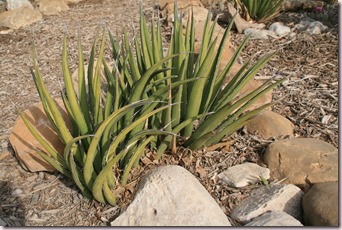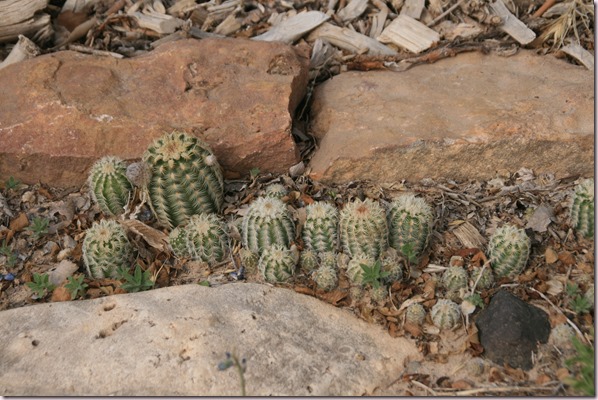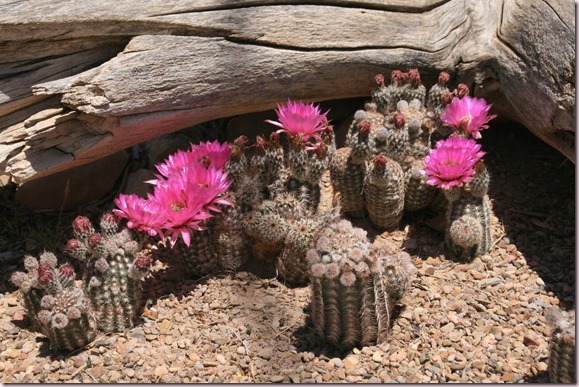As I was finishing my weeding for the day, some things came up that I should have mentioned in the last post about weeding the garden. So let me add to the list of helpful hints.
I have found that if the ground is wet, or damp from rain or human watering, the weeds pull out a whole lot easier. And up here that means that before I try to weed an area, I will water by hand and let is soak in an hour or two before I try to weed. It really does help you to get the whole weed, roots and all, and if you don’t get the roots, well, the weed comes back even bushier than before.
Likewise, it is easier to pull up live weeds than dead ones, so I prefer to weed rather than spray and then have to pull out dead, unsightly brown weeds. As I mentioned last week, I don’t like to leave what I pull out in the garden; that becomes unsightly as well. Another reason I don’t like to spray is the danger of getting the herbicide on the plants I don’t want to kill. I usually use Round-up, which is not selective-it kills anything it touches, so don’t spray when it is windy and perhaps cover any nearby plants to protect them from possible herbicide drift in the wind. The only thing I do spray is invading Bermuda grass because it is hard to get all of the runner and roots that don’t show when you just pull the green tops.
I mentioned having clippers handy to prune prickly pear and cholla so they don’t become overgrown and take over the area. I like to keep my pear and cholla trimmed and shaped and out of my way when weeding around them.

For example, this prickly pear has fallen and ruins the overall look and shape of the plant, so it needs to come off during my next weeding session. The loose fallen pad underneath it needs to be taken out, too, so it won’t root while on the ground since I don’t want another plant there.
I failed to mention that when you weed, it also gives you the chance to catch other desirable but invasive plants before they get out of hand. Certain yuccas and agave are prone to spread, and if you catch them early, they are easy to deal with. I think most yuccas and all agaves make a much stronger statement as one single specimen rather than a mess of parent and babies anyway. And those clumps of parent and babies are harder to weed.


I like having this yucca as a specimen in my collection, but I don’t want a whole bed of it, so when the runners pop up, I take them out. Look closely in the first picture and you can see the little one peaking out as shown in the second picture. When I stated digging it out, one led to another and another, and I stopped counting at 25! But better to have found them lurking beneath the rocks and mulch than as full-fledged plants to be dealt with.
Something else that weeding lends itself to is discovering cactus seedlings that have come up voluntarily that might need to be relocated for best effect, and to trim tree branches that might be in the way as you weed. It is fun to find the babies, and it makes your job easier to get those extra tree branches out of the way and usually makes the bed look better anyway.

All these smaller cactus came up from seeds. I should have relocated some of them, but I kind of like the look of the cluster. I may still move a few of them.
Unfortunately, it is inevitable that a few cactus may die as time goes by, and when weeding, those are discovered and easily disposed of. Dead cactus distract from the look of your garden and need to come out.
One tool I might add to your list is a pair of plain old eyebrow tweezers. Spines in the fingers and other exposed skin is just a fact of life if you deal with cactus, so get used to it. If you get them out quickly, they really aren’t much of a problem, and a handy pair of tweezers helps.
So. Now you are fixed for the task at hand. Get out there in the cool of the early morning to work, then admire what’s blooming during the heat of the day, and perhaps do a little more weeding as evening comes, and it will be done before you know it.

thanks, i want to help a friend weed her cactus garden and your advice will help. especially the pruning and tweezers.
You are welcome, m. Wilson; glad I could help.